The last time I visited the Virginia Museum of Fine Arts in Richmond, it was to review a superb exhibition on the work of Edward Hopper. Returning more than two years later to see two exhibitions on the same visit, I was once again impressed by how this institution, located outside the major power centers of the art world in this country, can manage to mount extraordinary shows.
This time round, the VMFA is celebrating two of the most important American photographers of the 20th century, Man Ray and Ansel Adams. While their work could not be more divergent, when considered in tandem, it’s striking to realize how much successful photography, and indeed art in general, depends upon achieving a certain mastery of artifice in order to succeed with the viewer.
“Man Ray: The Paris Years” is not only big, with well more than 100 photographs and a number of other objects, it is hands down the best exhibition I’ve seen so far this year. Fortunately the show is focused on Ray’s photography rather than his paintings and sculpture, of which the less said the better.
Photographing the Famous
Emmanuel Radnitzky (1890-1976), or “Man Ray,” as he came to call himself after the family changed their last name, was born in Philadelphia but grew up in Brooklyn. He first made a public name for himself as an avant-garde artist in New York, befriending photographer and Modern art promoter Alfred Stieglitz (1864-1946), and collaborating with the regrettable Marcel Duchamp (1887-1968). Like a number of young American thinkers after World War I, he moved to Paris in 1921 to seek inspiration and opportunities in an atmosphere of intellectual debate, artistic experimentation, and of course, plenty of booze and jazz.
Barbette, 1926, Man Ray (American, 1890–1976), gelatin silver print. Virginia Museum of Fine Arts, Arthur and Margaret Glasgow Endowment, 2018.360 © Man Ray 2015 Trust/Artists Rights Society (ARS), NY/ADAGP, Paris 2021.
During Ray’s first stay in Paris, he concentrated primarily on photography, and captured everyone from socialites such as the duchess of Windsor (1896-1986) to cutting-edge fashion designers like Elsa Schiaparelli (1890-1973) and rule-breaking writers like Ernest Hemingway (1899-1961) or Raymond Queneau (1903-1976). His portraiture dominates the VMFA installation overall, but there are also examples of his forays into other types of images.
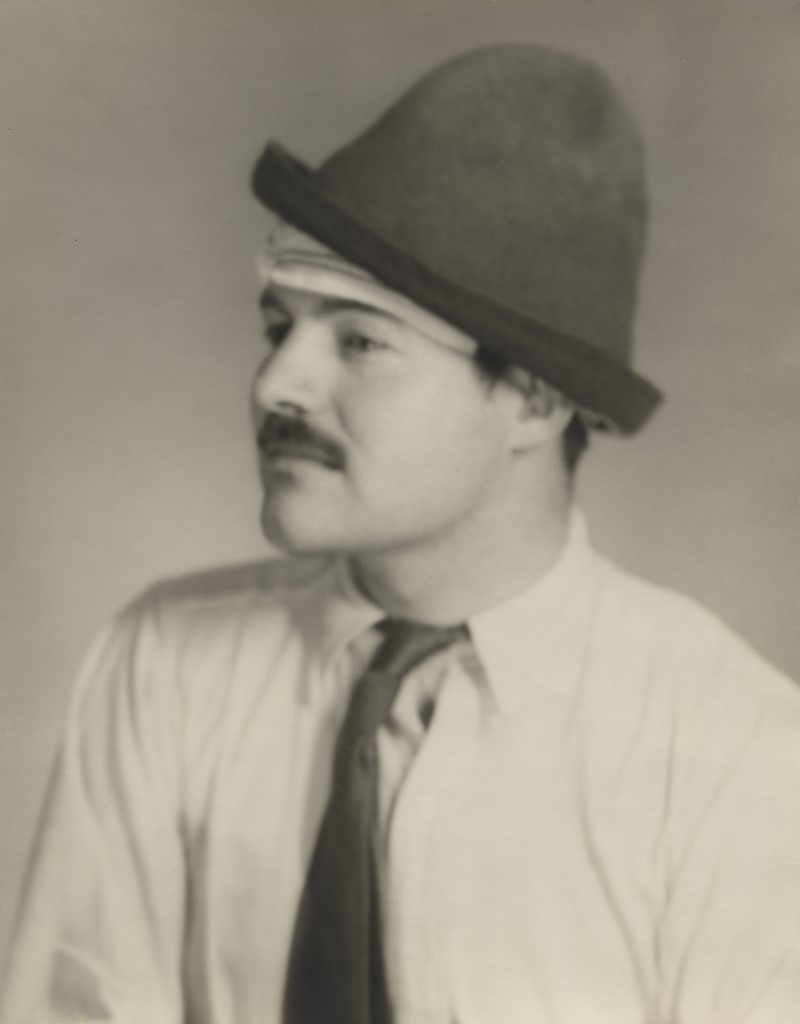
Ernest Hemingway, 1928, Man Ray (American, 1890–1976), gelatin silver print. National Portrait Gallery, Smithsonian Institution, NPG.77.130 © Man Ray 2015 Trust/Artists Rights Society (ARS), NY/ADAGP, Paris 2021.
Glamorous fashion magazine covers are displayed alongside more candid photos of men and women driving their new, fast cars. Innovative use of photogram and solarization techniques are employed to create Surrealist compositions. There’s even a screening room in which you can sit and watch some early examples of Ray’s arthouse films, including one focused on the fancy footwork of a flapper dancing the Charleston.
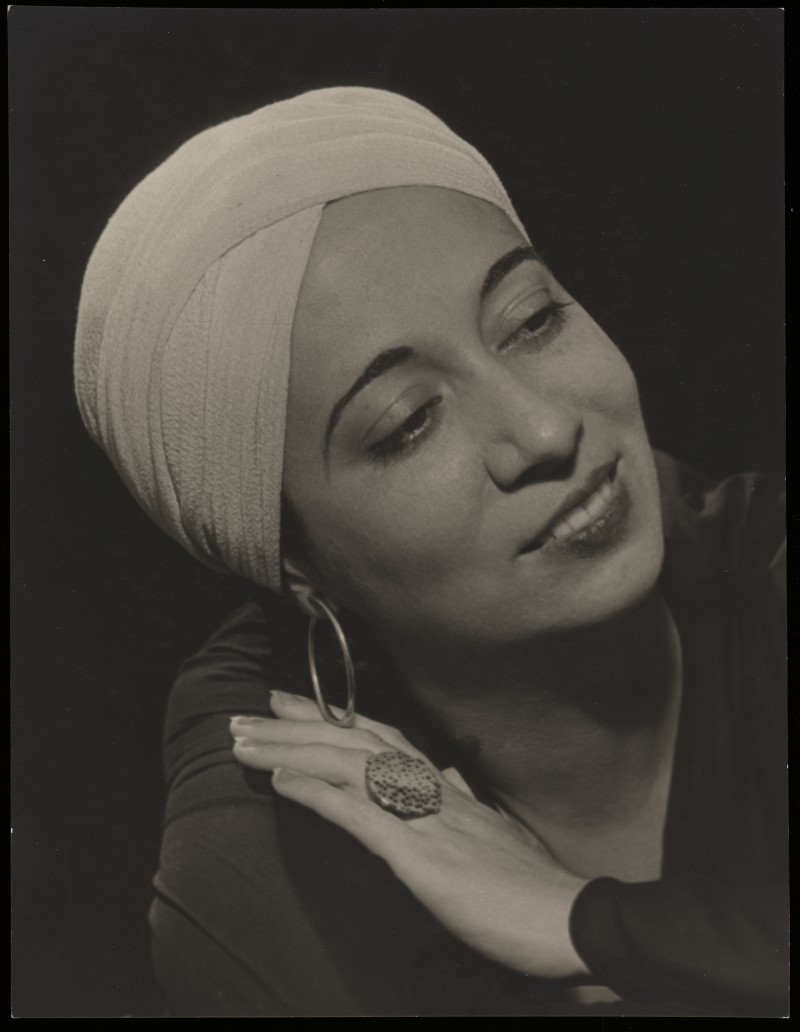
Elsie Houston, 1933, Man Ray (American, 1890 1976), gelatin silver print. Virginia Museum of Fine Arts, Arthur and Margaret Glasgow Endowment, 2018.364 © Man Ray 2015 Trust/Artists Rights Society (ARS), NY/ADAGP, Paris 2021.
Many of Ray’s friends and colleagues, including Duchamp, composer Igor Stravinsky (1882-1971), and sculptor Constantin Brâncuși (1876-1957), make multiple appearances in the show, and the exhibition has the feel of strolling along and observing Parisian café society of the inter-war period.
Ansel Adams in Nature
Upstairs at the VMFA, meanwhile, the smaller but still impressive exhibition “Ansel Adams: Compositions in Nature” at first glance seems a vastly different affair. A younger contemporary of Ray, Adams (1902-1984) is well-known as a photographer of the American West, a long-serving director of the Sierra Club, and a recipient of the Presidential Medal of Freedom.
He also ventured into other types of photography, including commercial work, portraiture, government commissions, and photojournalism, and even maintained a lifelong practice of writing music in his spare time. The exhibition bears tribute to this both audibly and in describing how music influenced Adams’s pictorial compositions.
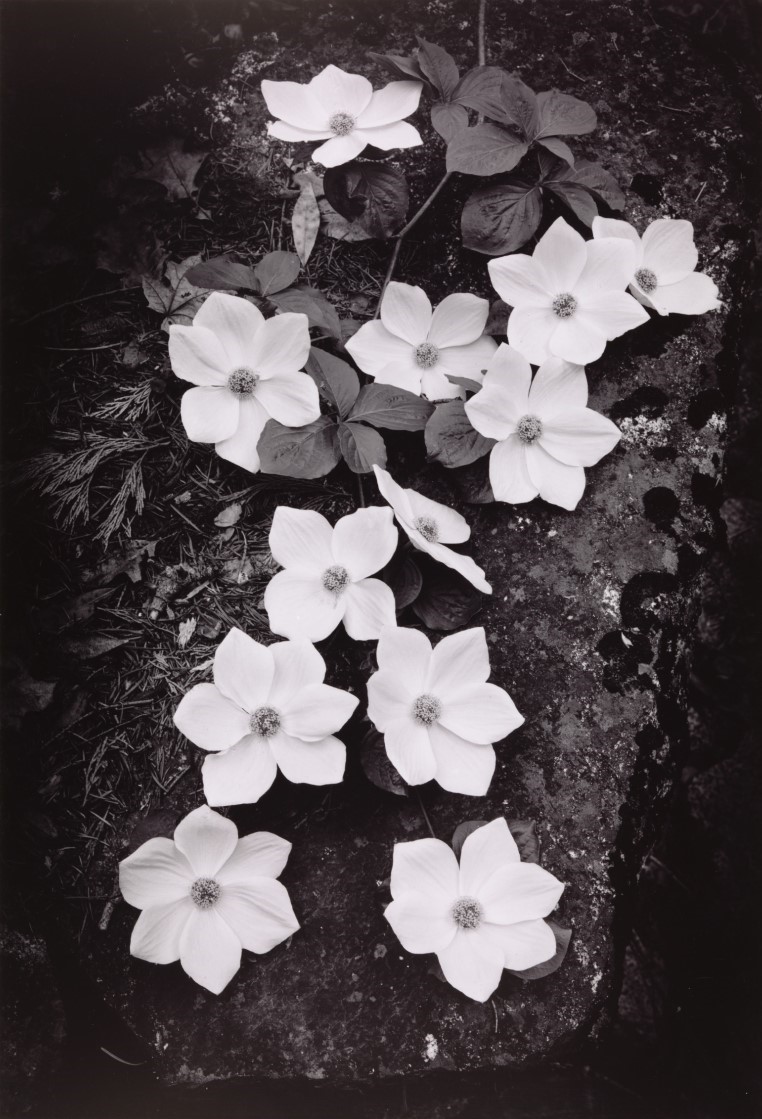
Dogwood Blossoms, Yosemite Valley, 1938, Ansel Adams (American, 1902–1984), gelatin silver print, printed 1960. Virginia Museum of Fine Arts, Gift of Dr. and Mrs. Bernard J. Sabaroff, 85.1538. Photograph by Ansel Adams © The Ansel Adams Publishing Rights Trust.
Born and raised in California, Adams’s deep interest in preserving the natural landscape of places like Yosemite and the Sierras, alongside efforts to advance the art of photography through new techniques, equipment, development, and printing, had a lasting impact not only on landscape photography, but also on photography in general being taken seriously as an artistic medium.
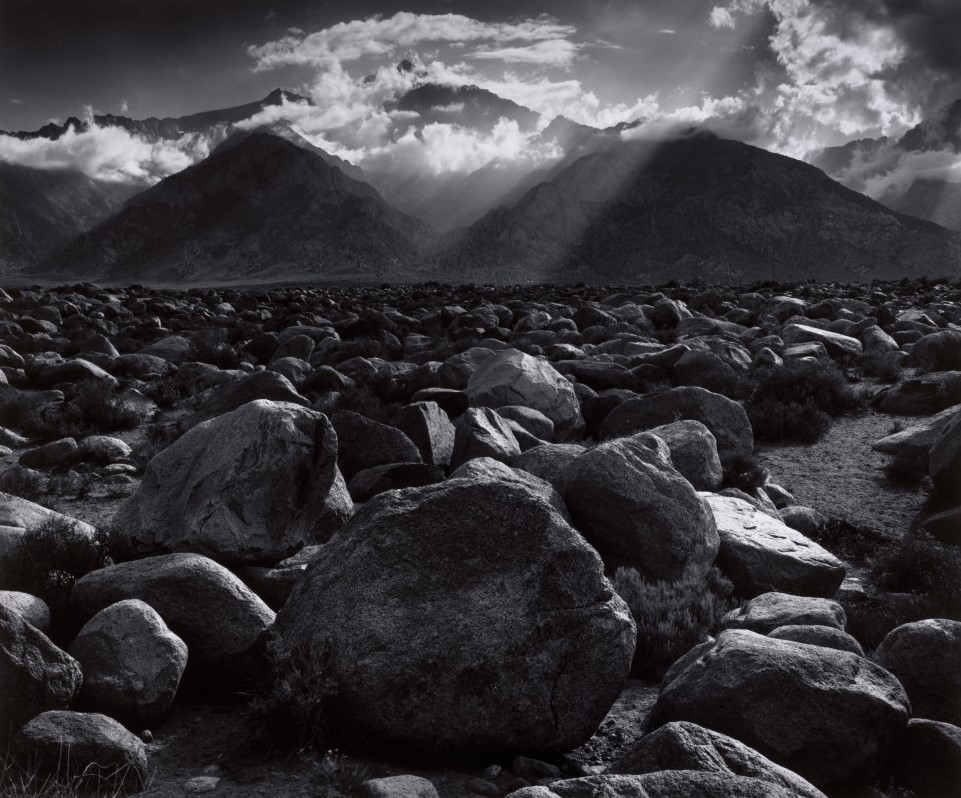
Mount Williamson, Sierra Nevada, from Manzanar, California, 1944, Ansel Adams (American, 1902–1984), gelatin silver print, printed 1973–1975. Virginia Museum of Fine Arts, Adolph D. and Wilkins C. Williams Fund, 75.29.2. Photograph by Ansel Adams © The Ansel Adams Publishing Rights Trust.
Surprisingly perhaps, this led to Adams, whom one might assume felt more at home working from a Woodie somewhere outside of Taos, helping to establish the Department of Photography at the Museum of Modern Art In New York. While today, we may be accustomed to institutions such as the VMFA hosting photography exhibitions and collecting photographic images, thanks to Adams’s guidance and input MoMA was the first major American museum to do so.
Masters of Artifice
While their subject matter differed substantially, Ray and Adams similarly created their images by employing equipment and techniques they developed or adapted over many years of trial and error. Neither simply pointed his camera, snapped a picture, and then published the result. Yet what really unites two such seemingly disparate shows, apart from their both featuring the work of American photographers who loved music, is that in their respective genres, Ray and Adams were absolute masters of artifice.
The difference between art and artifice, of course, is to some extent in the eye of the beholder. The former usually carries a positive or at least neutral connotation regarding the creative impulse, while the latter takes that impulse and seeks to deceive the observer. However, if I may be forgiven for splitting entomological hairs in a wince-inducing way, you cannot have art without artifice. For a deception to work, one must either be unaware of the deception, or, perhaps more importantly for all forms of art, willing to be deceived.
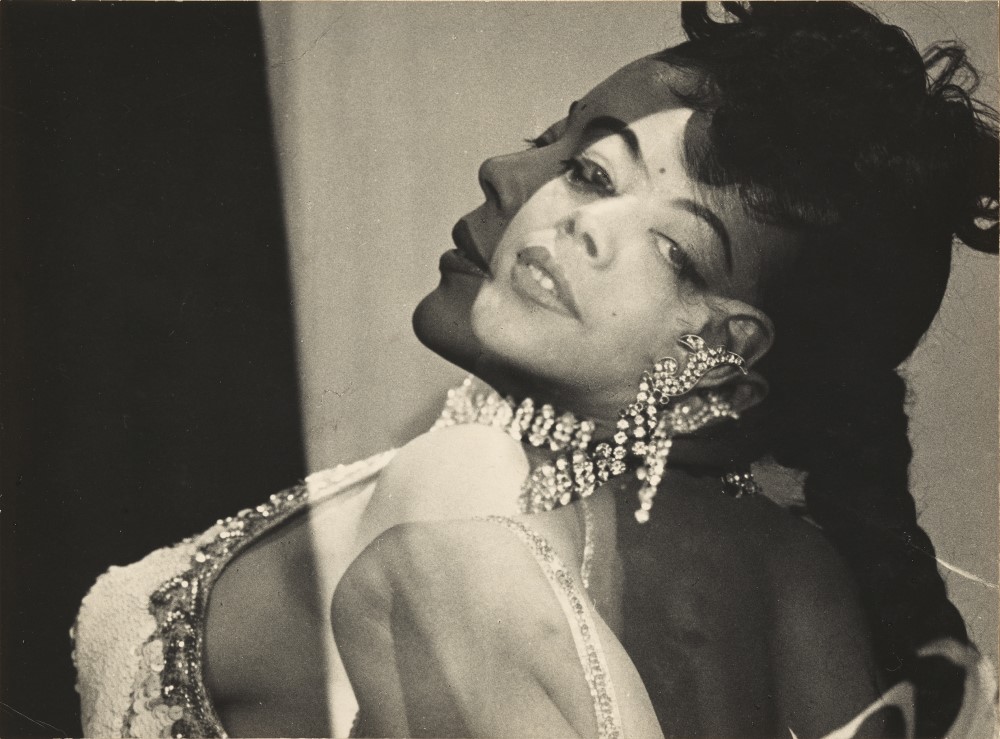
Ruby Richards with Diamonds, ca. 1938, Man Ray (American, 1890–1976), gelatin silver print. Collection of Michael and Jacky Ferro, Miami © Man Ray 2015 Trust/Artists Rights Society (ARS), NY/ADAGP, Paris 2021.
Films are of course a perfect example of this. Currently there are no manned vehicles capable of intergalactic space travel, nor were there cameras rolling during the Revolutionary War. Yet if a movie is well-crafted, we engage in a suspension of disbelief: we allow ourselves to forget that what we’re witnessing is not reality, but a work of art arising out of someone else’s imagination. We willingly go along for the ride, even though we know what we’re seeing is artificial.
In his celebrated 1884 lecture, “The Storm-Cloud of the Nineteenth Century,” the English art critic John Ruskin (1819-1900) noted that while we perceive natural phenomena such as clouds with our gift of sight, portraying clouds via an artistic medium will always be hampered by the limits of artificiality. “The bright reflected colors of clouds can be represented in painting,” he notes.
However, because the natural colors as we observe them are brighter than even the purest white pigment an artist could obtain, the artist can only indicate the location and nature of the colors that appear in the clouds. “Only artificial, and very high illumination would give the real effect of them,” Ruskin concludes, “painting cannot.”
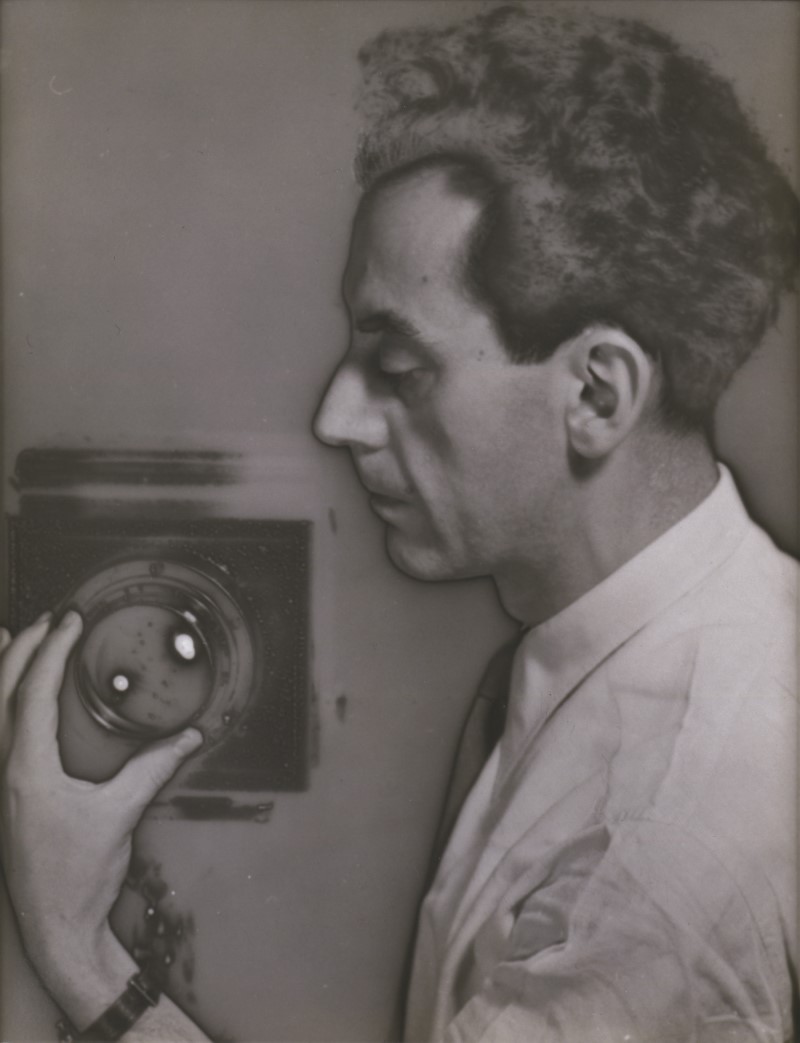
Self-Portrait with Camera, 1930, Man Ray (American, 1890–1976), solarized gelatin silver print. The Jewish Museum, New York, Photography Acquisitions Committee Fund, Horace W. Goldsmith Fund, and Judith and Jack Stern Gift, 2004-16 © Man Ray 2015 Trust/Artists Rights Society (ARS), NY/ADAGP, Paris 2021.
All Reproductions Lose Something in the Attempt
To take this observation a bit further, we might (reasonably) conclude that, no matter how talented the artist or how advanced the medium or technique, we are willing to overlook the inevitable loss that occurs in the translation from the real to the artificial. What we perceive in person cannot be entirely recreated in art—and that includes the art of photography. The photograph, after all, is no less artificial a way of conveying an image than any other form of art.
We might think of Ray’s famous photograph “Noire et Blanche” (1926), for example, an image of model Kiki de Montparnasse (1901-1953) leaning her head to the side while holding an African tribal sculpture, to be profoundly artificial; we might even use a descriptor such as “posed” in a pejorative sense to categorize it.
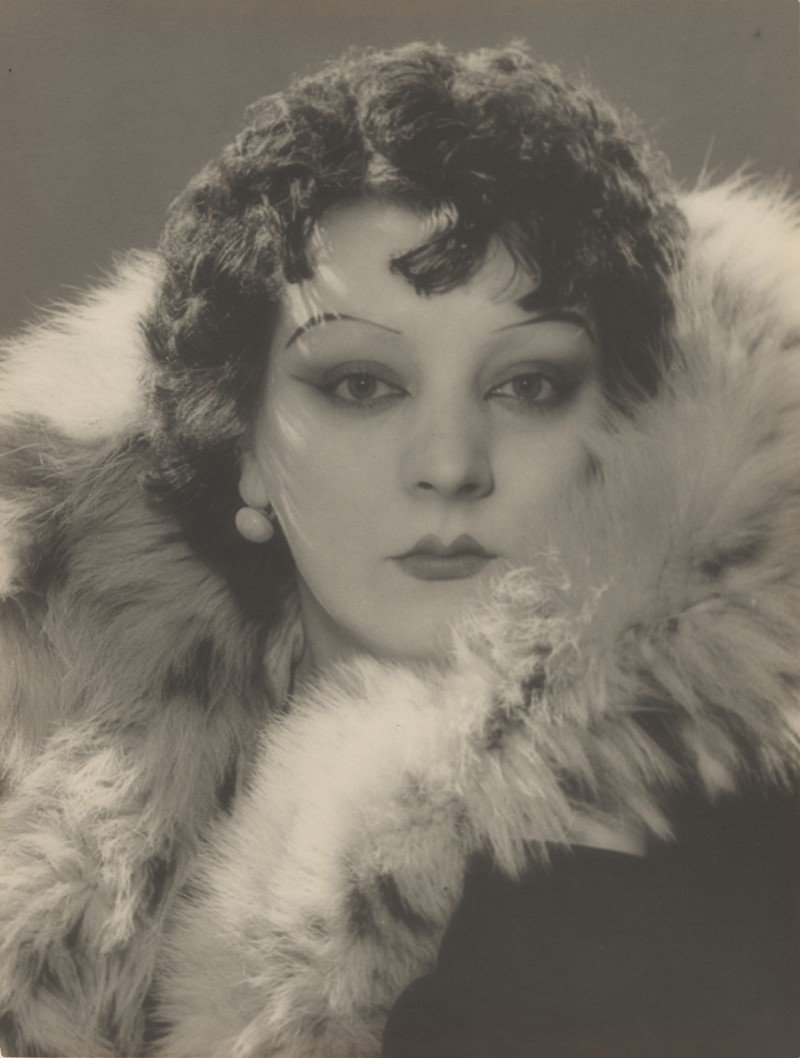
Kiki de Montparnasse, ca. 1924, Man Ray (American, 1890–1976), gelatin silver print. Francis M. Naumann Fine Art, New York © Man Ray 2015 Trust/Artists Rights Society (ARS), NY/ADAGP, Paris 2021.
Yet a carefully cropped and meticulously developed Adams image such as “Aspens, Northern New Mexico” (c. 1958), depicting part of a stand of aspen trees in deep blacks and pale grays, is not less artificial or posed simply because it depicts tall, leafy things growing out of the dirt. We like the artifice involved in creating such images because we like to be deceived.
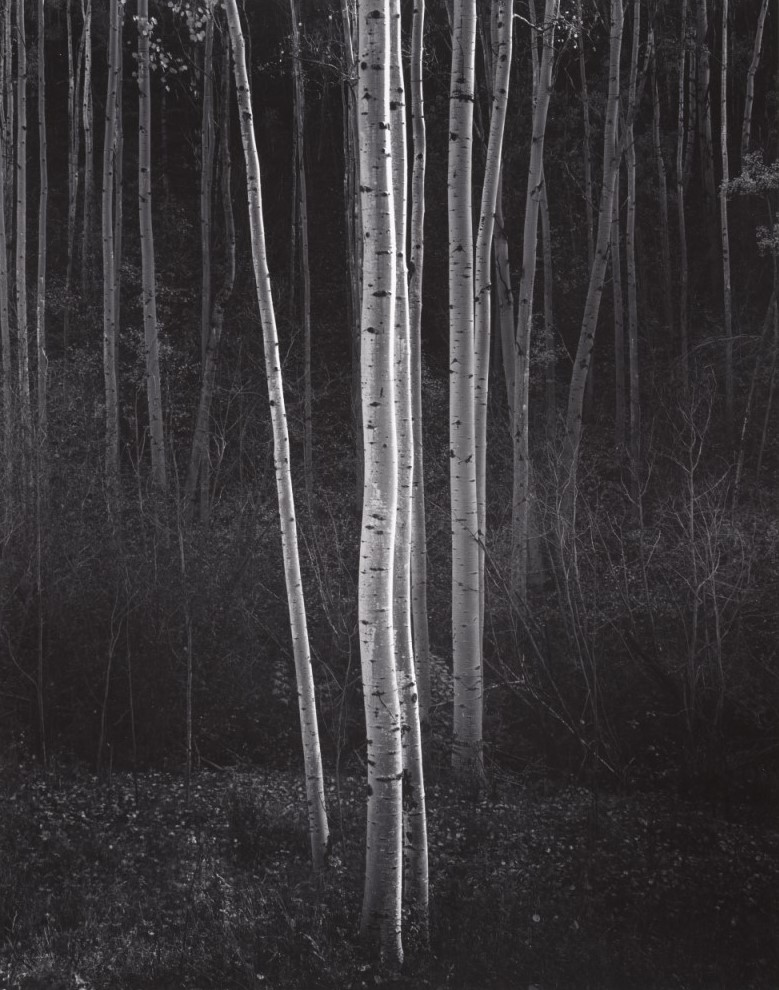
Aspens, Northern New Mexico, 1958, Ansel Adams (American, 1902–1984), gelatin silver print. The Turtle Bay Exploration Park, Redding, CA, 2002.13.3. Photograph by Ansel Adams © The Ansel Adams Publishing Rights Trust.
Just as Ruskin observed in his remarks on painting, photography typically seeks to reproduce the natural through unnatural means. While a photograph is certainly capable, under the right circumstances, of capturing an instant, fleeting moment, the moment itself is not recreated in the process. The image merely records the moment as seen from the photographer’s particular perspective, at a particular point in time, using particular methods and techniques.
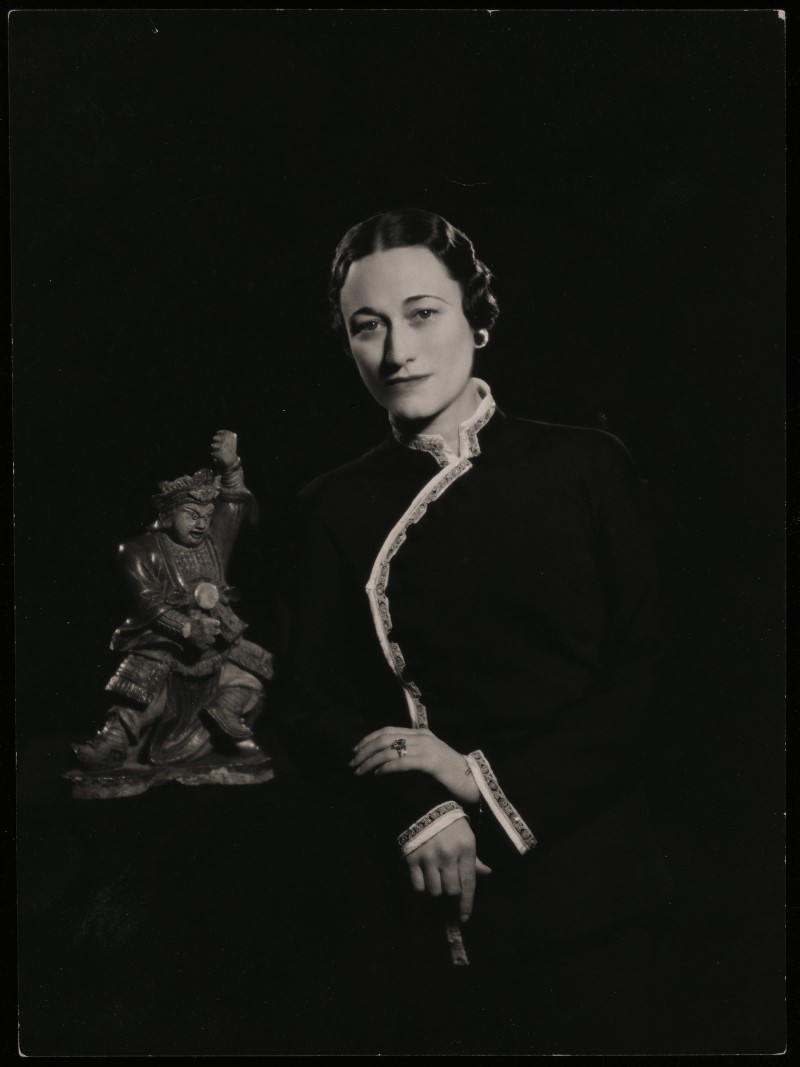
Wallis Simpson with Chinese Sculpture, 1936, Man Ray (American, 1890–1976), gelatin silver print. Virginia Museum of Fine Arts, Arthur and Margaret Glasgow Endowment, 2021.74 © Man Ray 2015 Trust/Artists Rights Society (ARS), NY/ADAGP, Paris 2021.
This is a fundamentally artificial means by which man has sought to capture some aspect of reality, and we are all taken in by it on a daily basis. After all, photographs, of both the still and moving varieties, are the primary artistic medium by which contemporary society conveys both truths and falsehoods to a wider audience. We can easily forget that photography is no less malleable in the hands of an accomplished photographer than is a lump of clay in the hands of an accomplished ceramicist.
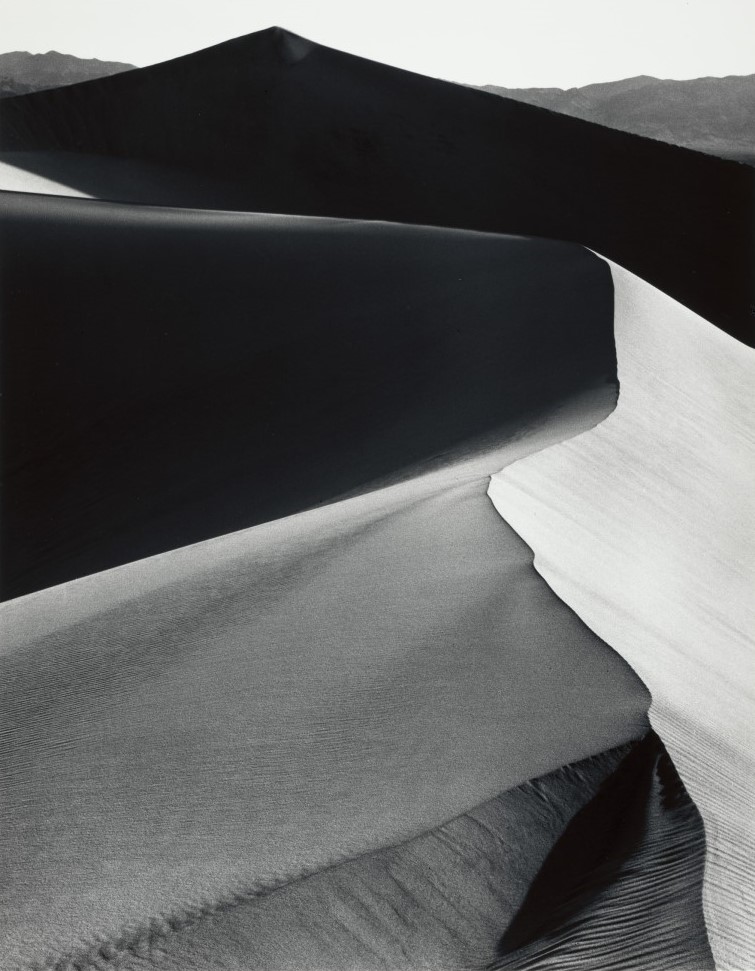
Sand Dunes, Sunrise, Death Valley National Monument, CA, 1948, Ansel Adams (American, 1902–1984), gelatin silver print, printed 1974. Virginia Museum of Fine Arts, Gift of Andrea Gray Stillman, 2018.584. Photograph by Ansel Adams © The Ansel Adams Publishing Rights Trust.
Ray and Adams were well aware of what they had to do, within their respective areas of interest, to employ artifice in order to sell us an image or a concept that we want to look at, talk about, or hang on the wall. If you’ve ever trimmed or slapped a filter on an image you uploaded to social media, you’ve done exactly the same thing.
While your shooting and editing skills may not be on a par with theirs, comparing their work at the VMFA will certainly give you a great deal to think about for your own photography, as well as in more widely considering how we allow images to alter our perceptions in the pursuit of visual pleasure.
“Ansel Adams: Compositions in Nature” is at the Virginia Museum of Fine Arts in Richmond, Virginia through January 2, 2022. “Man Ray: The Paris Years” is on show through February 21, 2022, and is accompanied by a large, hardback exhibition catalogue filled with great images and plenty of research that would look great on an Art Deco coffee table. As of this writing the VMFA website is undergoing maintenance, but tickets can be booked by visiting here.






